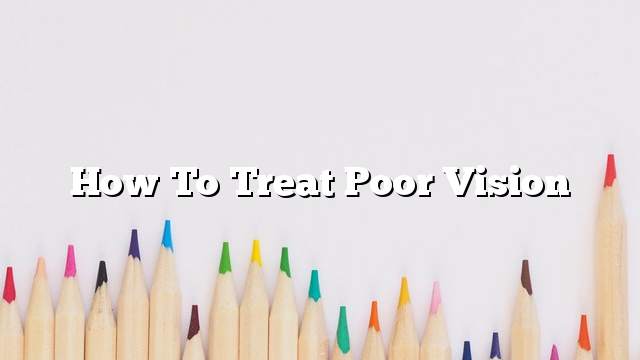Vision impairment is a visual loss that can not be corrected with glasses, contact lenses, or surgery. Visual impairment does not include complete blindness, because in the case of weakness there is still some horizon, impaired vision can be cured or compensated for the shortfall in the visual horizon By using magnifying glasses, and weak vision includes different degrees of loss of vision – from the presence of blind spots for almost complete loss of vision – and the vision was divided into two categories based on the vision in the eye better:
- This includes people who have a vision rate between 20/70 and 20/20 after using contact lenses or eyeglasses.
- Blindness in official terms, and this indicates that the person’s vision in this category does not exceed 20/200, despite the use of correction by traditional glasses or lenses, as this category is limited to see less than 20 degrees wide.
What causes poor vision
In addition to age-related retinal conditions, there are many other possible causes of visual impairment, including such conditions as glaucoma and diabetes. Poor vision may also result from eye-related cancer, emaciation, stroke, eye trauma or brain injury , If you have any of these conditions you may be at increased risk of impaired vision.
How is the diagnosis of double vision
Eye examination by an eye care specialist can diagnose visual impairment. All you have to do is to schedule an appointment with your eye doctor if you have difficulty seeing. These difficulties prevent you from daily activities such as reading, traveling, cooking, working, watching TV , And the school. Ophthalmologist’s tests include the use of lighting, amplifiers, and special diagrams to help test visual acuity, depth visualization, and optical fields.
How to deal with low vision
Some eye disorders, such as retinopathy and diabetes, can be treated to restore or maintain vision. When this is not possible, people with low vision can find useful visual aids, including popular assistance for low vision:
- Telescopic glasses.
- Lenses that filter light.
- Magnifying glasses.
- Amplifiers by hand.
Non-visual aids designed for people with visual impairment may also be very helpful, and include some non-visual devices such as:
- Text Reading Program.
- High-contrast watches and speaker watches.
- Large publications.
- Watches and phones for the visually impaired.
